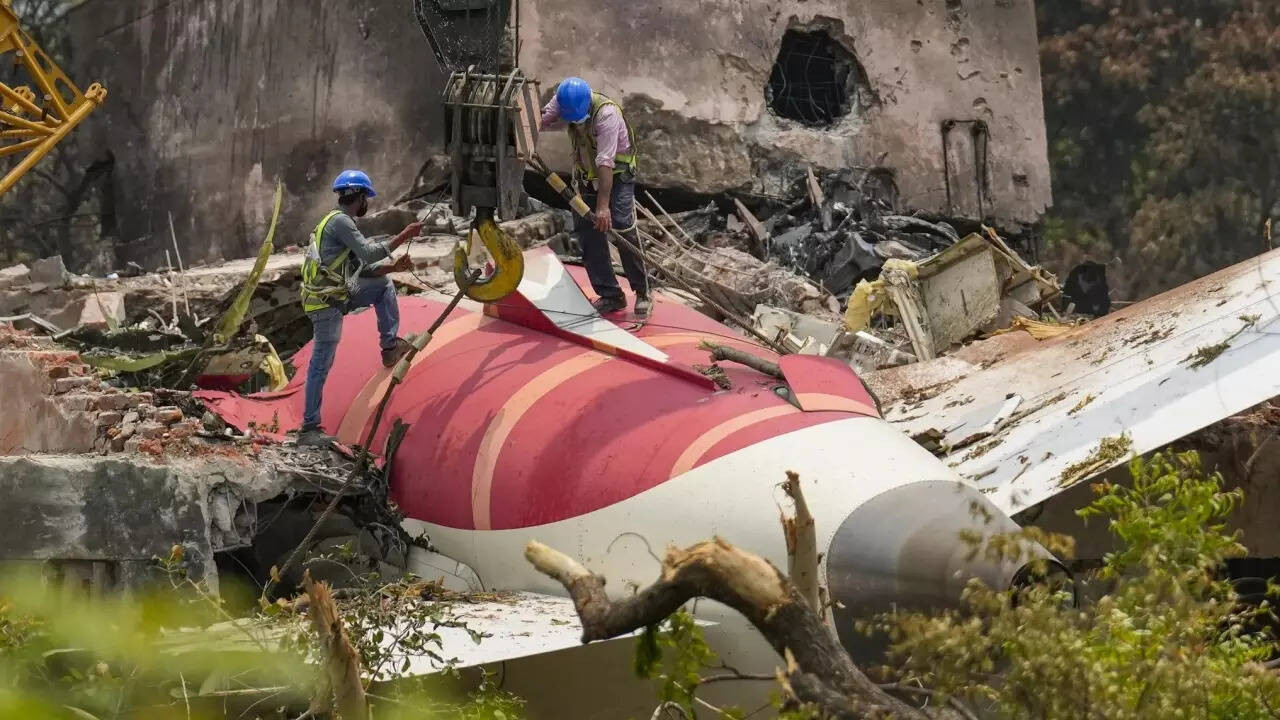Air India plane crash: Investigators are exploring potential simultaneous engine failures as the cause of the Air India Boeing 787 crash in Ahmedabad, which killed all but one onboard. Simulations suggest that landing gear and wing flap positions alone wouldn’t have caused the crash.
The Ghost in the Machine: Unpacking the Air India Boeing 787 Incident
The aviation world held its breath recently as details emerged about a harrowing incident involving an Air India Boeing 787 Dreamliner (AI-171) at Ahmedabad’s Sardar Vallabhbhai Patel International Airport. While thankfully, no one was hurt, the simulated circumstances surrounding the event paint a chilling picture, raising serious questions about potential technical vulnerabilities lurking beneath the surface of even the most advanced aircraft.
Imagine this: the flight is on final approach, the runway lights beckoning. Suddenly, both engines simultaneously lose thrust. A pilot’s nightmare unfolds as the aircraft becomes, in effect, a very large, very expensive glider. That’s the scenario investigators are grappling with, revealed through a detailed flight simulation recreating the AI-171 incident.
So, what went wrong? Forget dramatic weather or pilot error – the simulation points a finger squarely at a potential glitch within the Boeing 787’s complex engine control system. Early findings suggest a possible failure in the system responsible for managing engine thrust, leading to the simultaneous and unexpected loss of power.
<img src="image-url-here.jpg" alt="Close-up of a Boeing 787 engine, highlighting the complex systems involved in engine thrust control.” />
The investigation zeroes in on the Rolls-Royce Trent 1000 engines, the beating hearts of this particular Dreamliner. While these engines are generally reliable, they’re no stranger to scrutiny. Previous issues, including turbine blade durability problems, have led to inspections and modifications across the global fleet. This latest incident, however, seems to stem from a different source, potentially residing within the sophisticated software and sensors that govern engine performance.
Digging Deeper: Understanding the Potential Engine Thrust Failure
Modern aircraft engines aren’t simple mechanical beasts. They’re intricately managed by complex computer systems that constantly monitor a myriad of parameters: air pressure, temperature, fuel flow, engine speed, and countless other data points. These systems then make minute adjustments, optimizing performance for fuel efficiency, power output, and safety. A flaw in this intricate dance of data and commands could have catastrophic consequences, as the AI-171 simulation chillingly demonstrates.
What makes this incident particularly concerning is the simultaneous nature of the engine failure. Aircraft are designed with redundancy in mind. Losing a single engine is a serious event, but pilots are rigorously trained to handle such situations. Losing both engines at a critical phase of flight, however, presents a far greater challenge.
The ongoing investigation is meticulously examining flight data recorders and engine control unit logs, searching for anomalies that might explain the sudden loss of thrust. Investigators will be dissecting the software code, sensor data, and control algorithms, hoping to pinpoint the precise moment the system faltered. This process is akin to searching for a single dropped stitch in a vast and complex tapestry.
Beyond the Simulation: Implications for the Boeing 787 Fleet
While the Ahmedabad incident was a simulation, its implications ripple far beyond the confines of a computer screen. This event serves as a stark reminder of the critical importance of ongoing safety assessments and rigorous maintenance protocols for all aircraft. It underscores the need for constant vigilance, even for aircraft with established safety records.
The findings from this investigation could potentially lead to modifications in the Boeing 787’s engine control software, updated maintenance procedures, or even further inspections of the Rolls-Royce Trent 1000 engines. The goal, of course, is to prevent a similar incident from occurring in the real world. You might find our article on [airline safety regulations](internal-link-to-related-content) a helpful resource.
The Air India incident highlights the ever-present tension between technological advancement and inherent risk in the aviation industry. As aircraft become increasingly sophisticated, so too must the systems and processes that ensure their safe operation. This event serves as a critical learning opportunity, pushing engineers and regulators to refine their understanding of complex systems and to proactively address potential vulnerabilities before they can compromise flight safety. The analysis of this AI-171 flight engine thrust anomaly is ongoing.
The investigation is far from over, and the final conclusions may differ from the initial simulation findings. However, one thing is certain: this incident has placed a renewed focus on the critical role of engine control systems and the ongoing need for vigilance in maintaining the safety of modern aircraft. The aviation community waits with bated breath, hoping that the ghost in the machine can be identified and exorcised, ensuring the continued safety of the skies.







